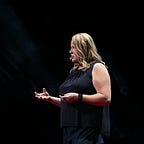The Future Classroom: Trends in Educational Technology
This article appears in the Fall 2017 issue of Silicon Slopes Magazine. For the print version, subscribe to Utah Business Magazine and you will automatically be sent a quarterly copy of Silicon Slopes Magazine.
Years ago, the most futuristic tech you would see in a classroom would be an overhead projector, or the Apple II. Now instead of an overhead projector there’s a device that creates augmented reality experiences and in many classrooms each student has their own laptop — and they’ve probably never seen a floppy disk.
Technology has changed the classroom, and with those changes comes opportunities and challenges. In Utah, classrooms are experiencing a transformation due in part because of joint efforts with the Utah State Board of Education (USBE), Utah Education and Telehealth Network (UETN) and the state legislature with funding through the Digital Teaching and Learning Program.
Sarah Young, one of two coordinators for the Digital Teaching and Learning Program notes that despite growth in technology, the human component is most important.
“The teacher’s are still the most valuable entity in the classroom. That doesn’t change with technology. Sometimes in Ed Tech there’s a misconception that computers will train our kids, they can sit in front of a screen for 8 hours and that will be amazing…but that’s not amazing.”
What can be viewed as amazing is the ability of those screens to personalize learning. Personalized learning can track and assess students learning, providing real-time reports to teachers and administrators. Teachers can then share and collaborate with those assessments, one feature that local Utah company MasteryConnect has.
In addition to personalized learning there’s growth in predictive analytics. These analytics can examine student data and anticipate their needs, similar to how Amazon marketplace recommends products based on past views and purchases. Young said, “we’re limited with how one person can serve 40 plus individuals.”
But with opportunities comes challenges. A concern with analytics and collection of student data is privacy. In K-12 education there is legislation to protect student data, like the Family Educational Rights and Privacy Act (FERPA) and companies have come together to vow to protect student privacy in the Student Privacy Pledge. However, what data can be collected, how it’s stored and how it can be used is still a “murky” issue. In addition, with the rapid growth of personalized learning, there hasn’t been many studies to observe implications and long term impact.
Young says that educational infrastructure is a growing trend…and need. “What we’re seeing is that as we increase access to technology, that infrastructure has become more valuable.” Infrastructure can include policies, access to the Internet and devices, tools to evaluate and manage software and very importantly: training and support for educators.
Educators remain the greatest educational tool. Teachers provide learning experience and create context for students. Young said, “I can Google to my heart’s content, but it doesn’t make me a better citizen or gives me a better foundation for success.” The increase of information has necessitated an increase in critical thinking skills. Students need to be able to not only critically examine information, but create and share their own.
Young adds, “When we look at opportunities in Silicon Slopes, the computer languages that our students need to know haven’t been invented yet. Building those foundational skills is what’s key.”
Utah school district’s digital teaching and learning plans are publicly available at Utah Educational Network’s website. Industry members are encouraged to view them.
